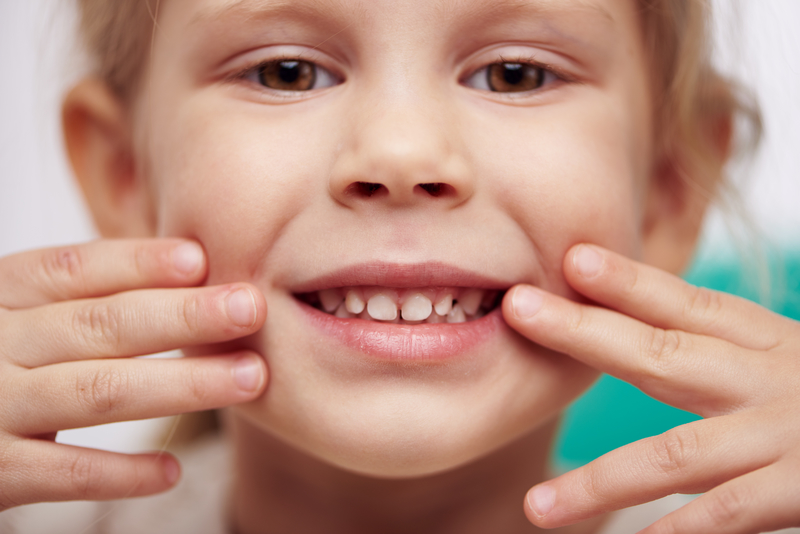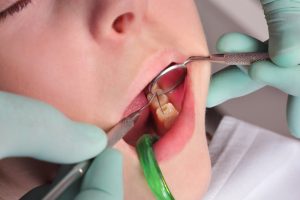Oral Health Problems Children Face Today
What Makes a Good Pediatric Dentist?
September 17, 2018What Braces Option Is Best for Your Teen?
October 4, 2018
In modern times, we have the best dental technology we have ever had to prevent oral health diseases and to treat them as they happen. However, children still are getting oral health problems such as tooth decay at alarming rates. Sugary foods, snacking, poor oral hygiene habits and the lack of frequent dental visits are just a few reasons why this is happening. Find out what the most common oral health problems are with children, why they are happening and what to do to prevent them in your child!
Oral Health Problems In Children
Did you know that senior citizens and children are the most likely age groups to end up with tooth decay? You know this term by the work “cavities”, and it’s something that 92% of people will have by the time they are adults. The National Institutes of Health and the Centers for Disease Control and Prevention both report that tooth decay is the most “prevalent, chronic disease” in both children and adults. The number of children affected is much higher:
- 42% of children between 2 and 11 have tooth decay. Individiaully, about 28% in the 2-5 year-old stage and 51% in the 6-11 age range have decay.
- 20% of 2-5 year-olds have cavities that have not been fixed and 24% of 6-11 year-olds have them.
- Children 6-8 already have a 10% rate or more of decay in their permanent teeth.
- 31% have it between 9 and 11.
In many cases, tooth decay goes untreated in children due to lack of insurance or available income. However, there are always options to help families pay for tooth decay fixes in their children. Fixing decay at its onset is the best way to help children keep their baby and permanent teeth to avoid tooth loss.

Baby Bottle Tooth Decay
For small infants, baby bottle tooth decay is a primary reason the baby teeth decay and fall out. This happens when infants go to sleep with their bottles for naps and for the night. It can also happen if a child has a bottle all day long instead of during mealtimes. This long exposure to sugars in milk lead to the teeth decaying. With infants and small toddlers, never put food or bottles in their crib and make sure they eat at meals and snack times instead of all day long. Brush their teeth after they have a meal or a bottle. If they still don’t have teeth yet, wipe their gums and teeth with a wet cloth after a feeding.
Child Gingivitis
Gum disease affects 64.7 million American adults. This is a disease of the gums associated with tooth decay. When you eat, sugars in your food mix with mouth bacteria to create a sticky film called plaque. That plaque is acidic, sticks to the teeth, and starts to erode and decay them by breaking up the minerals in your teeth. That is how tooth decay and other oral health diseases happen. Plaque collects along the gum line and it’s acidity irritates the teeth. This can cause red and swollen gums, bleeding gums and gum recession, which exposes the teeth and causes tooth loss. When tooth decay gets bad in children, gum disease can happen at an early age.
Orthodontic Issues
Not all oral health issues are centered around plaque and tooth decay. The actual structure of your child’s mouth may be causing them oral health problems in the first place. Have you ever seen a young child wearing braces? This is not because a child wants to have straight teeth for reasons that an adult would. With child orthodontics, there is usually an oral health problem that is present because of bite and alignment issues. In the mouth, the top and bottom jaws should line up. The front top teeth should rest evenly on the bottom teeth, with the front top teeth just very slightly in front of the bottom ones.
Some children don’t have their jaws line up, or their teeth grew in different direction. Some teeth may point outwards, inwards or a combination of the two. One jaw might jut forward more than the other as well. Both of these problems can cause serious issues in the future as a child grows. Speech impediments are common as well as issues biting, chewing, eating and cleaning the teeth. Tooth decay and gum disease can happen easier in these children because the teeth are at odd angles and certain areas are hard to clean.
Thumbsucking and tongue-thrusting are especially harmful to a child’s smile, as both of these actions will place pressure on the front teeth and will slowly make them curve outward. Tongue-thrusting is when children seal their mouths to swallow by pushing the tongue against the lips and those teeth on top. Lip sucking, as well, can cause overbite to occur, or the front top teeth jutting out in front of the bottom too much.

Helping Correct Child Oral Problems
How do you know if your child has an oral health problem? Often times, you won’t know unless you take your child to the dentist and orthodontist. Dental visits should start around 1 year of age or within 6 months of your child getting their first tooth. They should continue every 6 months. A dentist can spot oral health problems right when they are starting to begin so you can correct those problems.
Make sure to help your child brush their teeth at least twice a day, for 2 minutes at a time with fluoride toothpaste. Do this for your infant until they grow old enough. Floss their teeth 1-2 times a day when they start to come together more and teach them proper flossing. Invest in child fluoride products for them and orthodontic treatment if you notice a speech impediment or visible orthodontic issue. For questions about specific oral health problems and how to treat them, call Hardy Pediatric Dentistry & Orthodontics today at (720) 887-6003!